 W
WBaron Herman Baltia was a Belgian military officer, the son of the Belgian General Charles Baltia and of a German mother.
 W
WAloïs Biebuyck was a Belgian Lieutenant General who fought in the First World War.
 W
WBaron Léon Alphonse Ernest Bruno de Witte de Haelen, born Léon de Witte was a Belgian army officer and general who served during World War I. He is particularly known for commanding the Belgian Cavalry Division at the Battle of Haelen in 1914.
 W
WHenri Jean Charles Eugène Denis (1877–1957) was a lieutenant general in the Belgian Army who served as Minister of National Defence at the beginning of the Second World War.
 W
WÉmile Dossin de Saint-Georges, born Émile Jean Henri Dossin, was a Belgian Lieutenant-General and one of the foremost Belgian generals of World War I. Made Baron of Sint-Joris, a notable barracks at Mechelen was named in his honour in 1936.
 W
WCount Jean-Baptiste Dumonceau de Bergendal was a general from the Southern Netherlands, in the service of France and the Netherlands.
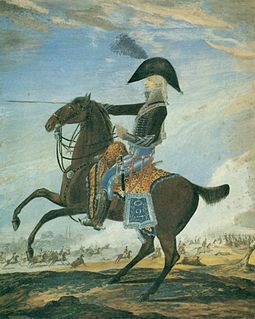 W
WCharles Étienne de Ghigny commanded a Kingdom of the Netherlands light cavalry brigade at the Battle of Waterloo. He joined a French light cavalry regiment in 1792 and served in the same regiment for 22 years, becoming its lieutenant colonel in 1806. He fought in the Peninsular War in 1810–1811 and in the latter year became colonel of the regiment. He fought in the 1812 French invasion of Russia, the 1813 German Campaign and the 1814 French Campaign. In 1814 he led a cavalry regiment at Fère-Champenoise and Paris. He changed his allegiance to the Netherlands in 1815 and was appointed major general. He was promoted to lieutenant general in 1826. He switched allegiance to the Kingdom of Belgium in 1831 and received the Order of Leopold in 1837.
 W
WCyriaque Cyprien Victor Gillain (1857–1931) was a Belgian officer who served in World War I and was chief of the Belgian general staff between April 1918 and February 1920.
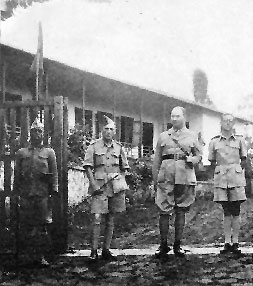 W
WAuguste-Édouard Gilliaert was a Belgian colonial soldier who served in both world wars, and a commander of the Force Publique in the Belgian Congo.
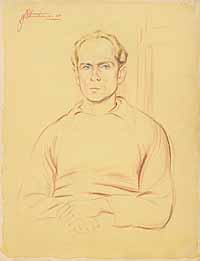 W
WMajor General Comte Albert-Marie Edmond Guérisse GC, KBE, DSO was a Belgian Resistance member who organized French and Belgium escape routes for downed Allied pilots during World War II under the alias of Patrick Albert "Pat" O'Leary, the name of a Canadian friend. His escape line was dubbed the Pat O'Leary Line.
 W
WBaron Henri Louis Gustave Guillaume (1812–1877), generally going by Gustave Guillaume, was a French-born Belgian army officer and military historian who served as Minister of War from 1870 to 1873.
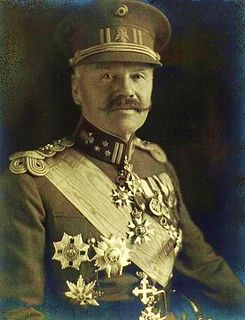 W
WLieutenant-general Baron Alphonse Jacques de Dixmude, often known as General Jacques, was a Belgian military figure of World War I and colonial advocate.
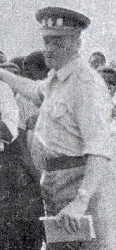 W
WÉmile Robert Alphonse Hippolyte Janssens was a Belgian military officer and colonial official, best known for his command of the Force Publique at the start of the Congo Crisis. He described himself as the "Little Maniac" and was a staunch disciplinarian, but his refusal to see Congolese independence as marking a change in the nature of his command has been cited as the immediate cause of the mutiny by the Force Publique in July 1960 that plunged Congo-Léopoldville into chaos and anarchy.
 W
WIgnacy Marceli Kruszewski was a Polish military leader.
 W
WLouis Joseph Lahure was a general in the service of the First French Republic and First French Empire.
 W
WGerard Mathieu Joseph Georges, count Leman was a Belgian general. He was responsible for the military education of King Albert I of Belgium. During World War I he was the commander of the forts surrounding the Belgian city of Liège. The German Forces had to use heavy artillery to break through the defences and capture Leman as a prisoner of War. He was released at the end of the war and died a hero, in 1920.
 W
WJean-André van der Mersch was a leading figure in the Brabant Revolution best known for his victory against Austrian forces of Joseph II at the Battle of Turnhout in 1789.
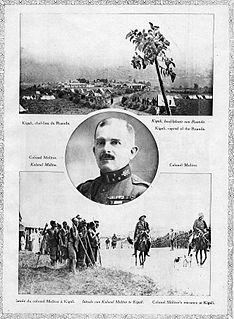 W
WPhilippe Molitor was a Belgian military officer. He is known for his role as commander of the Brigade Nord of the Force Publique, during the Tabora Offensive in the East African Campaign.
 W
WGeorges Brunon Joseph Marie Moulaert was a Belgian colonial administrator. He was deputy governor general of Équateur Province in the Belgian Congo from 1917 to 1919. Later he became a businessman, head of several large enterprises in the Congo, and director of others. He drew criticism for his forced recruitment of Congolese workers in the Kilo-Moto gold mines.
 W
WLieutenant General Jean-Baptiste Piron was a Belgian military officer, best known for his role in the Free Belgian forces during World War II as commander of the 1st Belgian Infantry Brigade, widely known as the "Piron Brigade", between 1942 and 1944.
 W
WAlbert-Florent-Joseph Prisse was a Belgian soldier, engineer, diplomat and statesman of French origin. His family lost their fortune during the French Revolution. He served in the army of Napoleon between 1809 and 1814 in Austria, Spain and the Netherlands. In 1816 he became a naturalized citizen of the Kingdom of the Netherlands, and served in the army as a surveyor. When Belgium broke away from the Netherlands in 1830 he became an officer of the new Belgian army. He served in various military commands, represented Belgium at the Court of the Hague for three years, and was Belgian Minister of War in 1846–47.
 W
WGeneral Charles Auguste Jean Baptiste Rouen, nicknamed “Rouen”, was born in Antwerp, Belgium, on 9 July 1838. He was a historian and Belgian soldier. He married in Brussels on 30 April 1862, to Joséphine (Jose) Straatman, daughter of ship-owner Lambert Straatman and Marie Sophie Fautier. He was the son of a hero of the Battle of Waterloo and Belgian revolutionary, Guillaume Rouen and Henriette Elius. Rouen was the brother-in-law of General Jean Prosper Beaudrihaye, who married Anne Caroline Straatman, his wife's sister.
 W
WLieutenant-General baron Louis Ruquoy was the Chief of Staff of the Belgian Army during the second part of the First World War.
 W
WJan Zygmunt Skrzynecki (1787-1860) was a Polish general, Commander-in-Chief of the November Uprising (1830-1831).
 W
WÉmile Pierre Joseph Storms was a Belgian soldier, explorer, and official for the Congo Free State. He is known for his work between 1882 and 1885 in establishing a European presence in the regions around Lake Tanganyika, during which he supported the White Fathers missionaries and attempted to suppress the East African slave trade.
 W
WLieutenant General Charles Tombeur was a Belgian military officer and colonial civil servant. As well as holding several major administrative positions in the Belgian Congo, he is particularly known for his role as commander of the Belgian colonial military, the Force Publique, during the first years of World War I. His military career culminated in the capture of Tabora in German East Africa in September 1916.
 W
WLieutenant-general BEM Victor Jean Clement, Baron van Strydonck de Burkel was a general of the Belgian Army and the primary architect of the formation of the Free Belgian Forces after Belgium's official surrender on May 28, 1940 in World War II.
 W
WJules Voncken was Surgeon-General of the Belgian Medical Component with the rank Major General. He was also co-founder and general secretary of the International Committee of Military Medicine (ICMM) located in Liège.
 W
WLieutenant-General Baron Théophile Wahis was a Belgian soldier and colonial civil servant who served as Governor-General of the Congo Free State and, subsequently, the Belgian Congo for two terms between 1891 and 1912. He was the longest ruling of Belgian colonial governors.
 W
WLieutenant-General Félix Maximilien Eugène Wielemans was the Chief of Staff of the Belgian Army during the First World War.